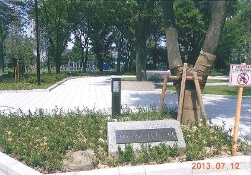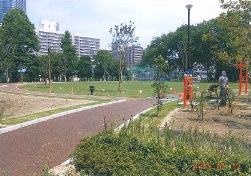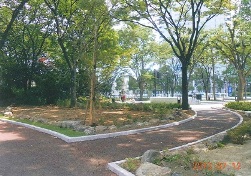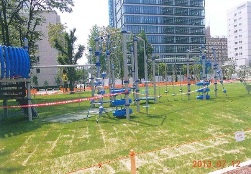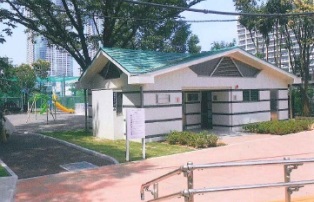Mount Fuji was registered with World Cultural Heritage at the end of June. Of course, the World Cultural Heritage includes Fuji Five Lakes, including Lake Motosuko.
I went to "Chuo Kumin Health Village" Villa Motosu "" on the banks of Lake Motosuko with several acquaintances. I've always said that there are many places to visit, including wonderful facilities and quiet Lake Motosuko, but this time I had the opportunity to visit in early summer.
 "Villa Motosu" was reopened on March 24, 2013.
"Villa Motosu" was reopened on March 24, 2013.
Fujiya Hotel, which has a history of 135 years, is in charge of operation and service. We tried to taste both Japanese and Western foods at the restaurant, but I was impressed that the meal for two days and one night was a wonderful taste anyway. (The photo on the right is from the pamphlet.)
Transportation from Tokyo
・By car, get off at the Lake Kawaguchi Interchange on the Chuo Expressway, follow National Route 139, and take about 2 hours and 15 minutes from Tokyo to the hotel.
・By train, change to the Fujikyu Line at Otsuki Station on the JR Chuo Line and get off at Kawaguchiko Station, take a local bus, get off at Motosu Entrance, and walk for 20 minutes. It's about 3 hours from Tokyo.
・There is a direct bus service from Chuo-ku. The boarding place goes around Nihonbashi, Tsukishima and Kyobashi in the ward, and departs in front of the Yaesu Fujiya Hotel near the south exit of Yaesu Station, so it is very convenient.
The fee is
Inhabitants of the ward, those outside the ward are a little higher than those working in the ward, but when we stayed, other wards also came.
The room
 Japanese-style room (10 tatami mats), Japanese-Western room (6 tatami mats + 2 beds), Western-style room (2 beds), Japanese-style room "Motosu" (10 tatami mats + 8 tatami mats), Western-style room "Fuji" (2 beds + living room), Japanese-Western room There were various types such as "Sakura" (8 tatami mats + 2 beds), and I was able to rest widely and relax slowly.
Japanese-style room (10 tatami mats), Japanese-Western room (6 tatami mats + 2 beds), Western-style room (2 beds), Japanese-style room "Motosu" (10 tatami mats + 8 tatami mats), Western-style room "Fuji" (2 beds + living room), Japanese-Western room There were various types such as "Sakura" (8 tatami mats + 2 beds), and I was able to rest widely and relax slowly.
In addition, there are two wonderful cottages in the forest, one with a capacity of 10 people, with a bath, toilet, kitchen and terrace, and barbecue facilities.
The area around the restaurant was large, large, transparent glass, and anyway, the fresh green forest shines beautifully, and I was able to feel really refreshing and refreshing.
When I went around the hall, I found tennis courts, parking lots, training rooms, lounges and audio rooms, great hall and training rooms, large public bath and family bath as well as cycling bicycles.
large public bath was not natural hot spring, but the large glass windows of the large public bath showed a beautiful fresh green forest, and I felt refreshed early in the morning.
From the courtyard, a Western-style hotel was beautifully shining on the lawn.
In the early morning, we took a walk around Lake Motosuko. It was a wonderful lake, combined with the depth and transparency of 138 meters, one of the best in Japan. Mount Fuji on the back of the 1,000 yen bill nodded the scenery from the north shore of Lake Motosuko.
In addition, advance reservations are required, but it seems that there is a tour of the Nature Guide for a fee. The contents of the guide include around Lake Motosu, the sea of trees in Aokigahara, and visiting historical sites related to the Takeda Shingen of Fengrin Volcano.
We had a dedicated microbus available at the hotel, and on the day of arrival, we toured "Fuji Kachoen" in Asagiri Highland, Fujinomiya City, the western foot of Mount Fuji. In addition to 1,300 begonia plants, a stunning large greenhouse with many flowers and 39 kinds of owl earthworms from around the world welcomed us. There were many highlights, and the tour time told by the driver was not enough.

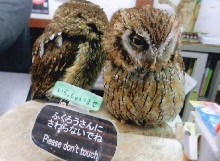
The next day, we visited "Saiko Iyashi no Sato". It was an experience-based facility that recreates the rural scenery that can be called "hometown of Japan".

It seems that there are still many attractions around the hotel. Why don't you use this wonderful inhabitant of a ward health village in Chuo-ku?
![]() For details on the use of facilities, please contact us.
For details on the use of facilities, please contact us.
Chuo-ku government office area promotion section inhabitant of a ward facility person in charge (TEL: 03-3546-5623)
Or
Chuo Ward Residents' Health Village "Villa Motosu"
218-119, Uenohara, Motosu, Fujikawaguchiko-machi, Minamitsuru-gun, Yamanashi
TEL: 0555-87-2711 Toll-free number for applications: 0120-162312
Click here for pricing and detailed information.
![]() http://www.chuo-villamotosu.jp/
http://www.chuo-villamotosu.jp/
※Brochures are available at Chuo-ku government office, inhabitant of a ward center, inhabitant of a ward hall, etc., so please use them.
